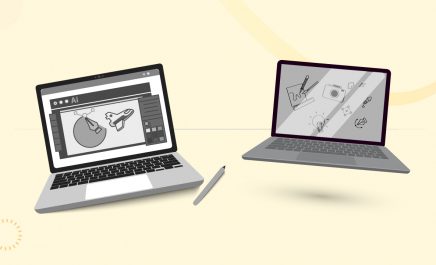Trusted by Global Brands
Recently Added Graphic Designer in our Network
Arnav Mathur
Founder and Art DirectorExp. 7.00 Years- Illustrator
- Figma
- Photoshop
- Ui/Ux designing
- UX Design
- UX Research
- Visual Design
- Project management
- and more
Kajol Mehta
Brand DesignerExp. 6 Years- Visual Design
- Adobe Illustrator
- SOcial Media
- Adobe Photoshop
- Brand Advertising
- Designing Logo
- and more
Kriti Dubey
Graphic Design ConsultantExp. 6 Years- UI Design
- Visual Design
- Adobe InDesign
- Graphic Design
- Website Design
- Landing Page Design
- and more
Lakshay Khewal
Graphic DesignerExp. 4 Years- Digital Designer
- Social Media Marketing
- Marketing Concepts
- 2d
- Design
- R
- C
- SOcial Media
- Gatsby
- and more
Hire Graphic Designers in 4 Easy Steps
Tell us what you need
We'll get in touch with you to understand your requirements and preferences.Meet the top talent
Get 3 to 5 suitable, pre-vetted candidates in 48 hours.Interview with ease
Choose the candidate that aligns with your needs and we'll arrange an interview.Hire with confidence
Once you decide, we'll take care of the onboarding process for you.
With Uplers,
no more posting a job on multiple portals.









Various Skills that Graphic Designer Possess
Access the talent network of 1.5M+ skilled professionals with 100+ skill sets
- Adobe Photoshop
- Adobe Illustrator
- Indesign
- HTML/CSS
- Branding
- Typography
- Creative thinking
- Layout Design
- Print Design
- Page Layout
- Concept Development
- Logo Design
- Visual Identity
- Digital Advertising
- Web Design
- Visual Communication
- Motion Graphics
Top Clients Reviews


Uplers helped to source and bring out the top talent in India, any kind of high-level role requirement in terms of skills is always sourced based on the job description we share. The profiles of highly vetted experts were received within a couple of days. It has been credible in terms of scaling our team out of India.


Uplers helped Tanium successfully grow their distributed team and achieve business goals in 2020, amidst the pandemic and talent shortage. Tanium was able to onboard the right fit on time to launch their marketing campaign, which played a crucial role in its growth story. Tanium found Uplers’ talents to be quick, efficient, and remarkable.


Uplers impressed me with their speed. They onboarded us, found a great candidate (Imran), and had us up and running in less than a week. The process was smooth, and while Imran had more experience than I initially expected, I felt confident he'd be a perfect fit.
Case Study
Frequently Asked Questions
How much does it cost to hire a graphic designer?
The cost of hiring a graphic designer from Uplers starts at $1500. The number varies depending on the experience level of the developer as well as your requirements.
What are the benefits of hiring a graphic designer from Uplers?
The benefits of hiring a graphic designer are you can save upto 40% on salaries, flexible hiring models, zero recruitment costs and no pre-hiring or post-hiring responsibilities to manage. Our talent curators take over the legwork and give you freedom from the tedious hiring process.
Will the hired graphic designer work during my business hours?
Working with teams during your local hours is possible. However, a 5% extra charge exists for the Australia and US region (4 hours overlap with IST timezone) and a 10% additional charge for the Australia and US region (8 hours overlap with IST timezone).
How do I hire a graphic designer from Uplers?
With Uplers, you can hire a graphic designer in a streamlined process. Here is a stepwise process of how to do it:
Step 1: Share your requirement
Step 2: Meet the top suitable graphic designers within 2 days
Step 3: Get an interview arranged by Uplers
Step 4: Hire the right talent & let us take care of onboarding formalities
How long will it take to hire a graphic designer from Uplers?
It could take anywhere between 2 to 4 weeks to hire and onboard a graphic designer from Uplers.
What is the no-risk trial period for Uplers graphic designers?
We have the option where the Graphic Designers can work on a no-risk trial period for up to 2 weeks (based on availability), so that you can assess our talent’s performance prior to making any commitments.
What should I consider before hiring a graphic designer?
1. Experience: Ensure the Graphic Designers have the skills and experience necessary to create the work you need.
2. Communication: Make sure the Graphic designer is able to effectively communicate with you throughout the process.
3. Cost: Have a clear understanding of the hiring costs
4. Timeline: Discuss the timeline for the project and ensure it fits within your own schedule.
5. Quality: Go through the designer’s portfolio to understand if their work meets your standards.
How does our transparent pricing model work?
Our transparent pricing model provides a clear breakdown of costs, ensuring you know exactly what you're paying for. We eliminate hidden fees and offer customizable solutions tailored to your needs.
Check Our Latest Blogs
 Read
ReadLeveraging Graphic Design to Strengthen Your Marketing Campaigns
- Sathvik Poojary
- October 23, 2024
- 7 Minute Read
- Blog
 Read
ReadHow to Streamline the Process of Hiring a Graphic Designer for Small Businesses
- Kritika Verma
- October 1, 2024
- 6 Minute Read
- Blog
 Read
ReadGraphic Designer vs. Graphic Artist: Who Should You Hire?
- Shachi Dixit
- August 16, 2024
- 8 Minute Read
- Blog
Discover handpicked, vetted talents.
Gain access to over 1.5M talents, each assessed using Advanced-AI.
If you are looking for a job, head to uplers.com/talent. If you are looking to hire, click to activate the form.

























